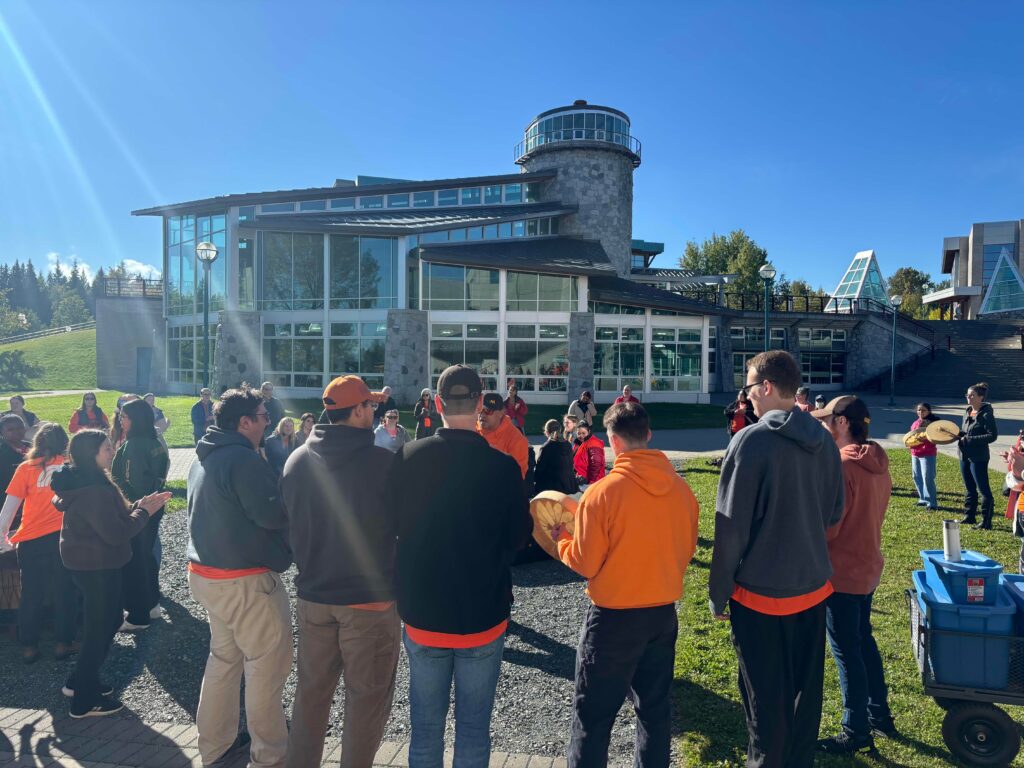
“Educators respect and value the history of First Nations, Inuit and Metis in Canada and the impact of the past on the present and the future. Educators contribute towards truth, reconciliation and healing. Educators foster a deeper understanding of ways of knowing and being, histories, and cultures of First Nations, Inuit and Metis.”
I initially gained knowledge about Truth and Reconciliation from a course on the history of Indigenous peoples and Canada. This course provided me with a lot of information about Indigenous people and the long-lasting impact of colonization, but I didn’t feel a strong connection to the subject at first. However, after watching some assigned videos in my EDUC 394 course, such as Cecelia Reekie’s and Carolyn Roberts’ talks, and especially after participating in the blanket exercise led by Dr. Daniel Sims and the fire circle led by UHNBC First Nations drummers, organized by Dr. Christine for Truth and Reconciliation Day, I began to connect with these stories on a deeper level. The blanket exercise was particularly powerful, helping me understand the lived experiences of Indigenous peoples, while the drumming circle evoked a strong emotional response. Through these activities, I learned that Truth and Reconciliation is not just about knowing history—it’s about engaging with the ongoing effects of colonialism and understanding the experiences of Indigenous peoples today.
This understanding matters to me because, as a future educator, I now realize that I have a responsibility to actively support Truth and Reconciliation in my teaching. Standard 9 of the Professional Standards for BC Educators emphasizes the need for educators to include Indigenous perspectives and histories in the classroom and to create inclusive environments for all students. Without this personal connection, I wouldn’t be able to teach these topics in a meaningful way. It’s essential for me to help students not just learn about Indigenous histories but also connect emotionally, encouraging healing and understanding.
Moving forward, I plan to continue my learning and actively integrate Truth and Reconciliation into my teaching practice. I want to create a classroom where Indigenous histories are respected and shared through Indigenous perspectives. I also aim to participate in more reconciliation activities, ensuring that I grow both personally and professionally in my understanding of these important issues.
As someone from another country, I believe in treating all students equally, no matter their background. This is something I care about a lot. However, learning about Truth and Reconciliation and standard 9 has helped me understand that it’s important to also recognize the unique experiences of Indigenous students in Canada. I am committed to supporting all my students, and I now realize how important it is to be aware of the history and challenges that First Nations students have faced. This learning has helped me understand how to create a more welcoming and supportive classroom for everyone.